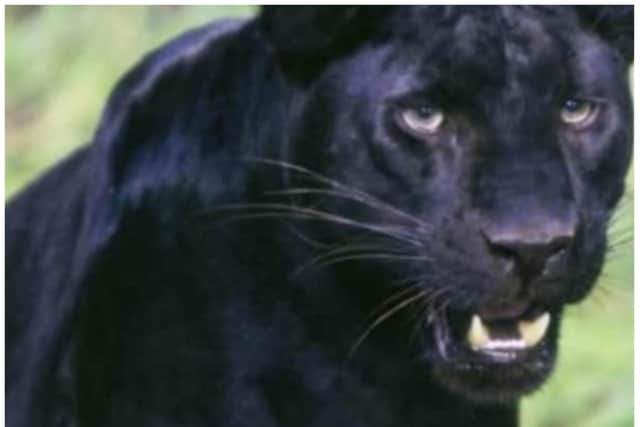Big cat hunter probing Yorkshire sightings says he has proof beasts are on the loose
While debate has raged over whether grainy pictures and videos can conclusively prove that big beasts are on the prowl, experts insist they are lurking in our countryside. Leading wildcat expert Rick Minter, who has investigated the mysterious creatures' movements for 20 years, claims that there could be as many as 1,000 fierce felines hiding in forests around the country.
The environmental consultant features in new documentary, Britain's Big Cat Mystery, which uses DNA analysis and photographic evidence to 'prove' that fearsome creatures from black leopards to pumas and lynxes live in our woods.
Advertisement
Hide AdAdvertisement
Hide Ad"It's a crucial issue," Rick told The Sun in an interview. "How do we come to terms with living alongside big cats in Britain? It's hard to judge how they are distributed. Deer is their main food source, so they are everywhere in the UK in reasonable numbers."


It comes after the latest Doncaster sighting which saw walkers spot a large, black animal prowling fields near Sutton cum Lound, south of the city, earlier this month. It is estimated that there are 2,000 reported big cat sightings each year, but this month a number of incidents have sparked fears the creatures could be growing bolder.
Rick says it's possible that the animals could have "roamed into new areas" in the wake of lockdowns, but believes human activity could have caused a shift too. "Green spaces on town edges became busier with people doing more local walks, which would disturb large cats and their main prey, deer."
Rick, who runs the Big Cat Conversations podcast, says the predators “very occasionally venture into urban areas at quiet times” in the search for food. He added: “This is probably due to a big cat having a nearby territory and occasionally diverting to the urban edges.”
Advertisement
Hide AdAdvertisement
Hide AdBritain's Big Cat Mystery gathers together some of the nation's most compelling photo and video evidence that wildcats are roaming free in our countryside. They included John Bilney's 2020 photos of a big cat's torso, which expert Trevor McKenzie said was "the most conclusive piece of evidence" he had seen.
He said the trail cam shots showed “a juvenile mountain lion or puma” and added: “There is no doubt in my mind.” Matt Smith's 2016 photo, snapped in Devon, was also highlighted for depicting rose-like markings on a creature's fur that are typically associated with a big cat. The documentary also examines compelling physical evidence, including 240 bone samples collected by Professor Andrew Hemmings, from the Royal Agricultural University.
They come from "defleshed carcasses" and feature teeth marks that appear to originate from the powerful jaws of a big cat. Field naturalist Jonathan McGown found a "beautiful double footprint" in Devon, from a big cat stalking its prey. The overlapping imprints are called ‘direct register’ – when cats' front and rear paws tread in the same footprint to reduce the noise.
Jonathan takes a mould and experts conclude the prints are from a “large non-native species” – likely a big cat due to its circular toes and the double register. Rick says he has personally heard of 1,400 credible accounts of big cats in the UK over the last decade, but believes they are the "tip of the iceberg" as most go unreported.
Advertisement
Hide AdAdvertisement
Hide AdDespite the recent sightings, he insists these big cats are “shy and wary animals” and not “large predators on the loose”.
He said: “They are far more scared of us and most often they are just trying to move humans away from their territory. They don’t want to risk getting injured from an encounter with humans or machines, and so they live in the shadows, hidden away." If they are drawn into urban areas, domestic-size cats may be taken unfortunately but this happens very rarely. They have an abundance of natural prey available – especially deer – so they don’t need to adapt their behaviour to scavenge regularly.”
Britain’s Big Cat Mystery airs at 9pm on Friday October 25.